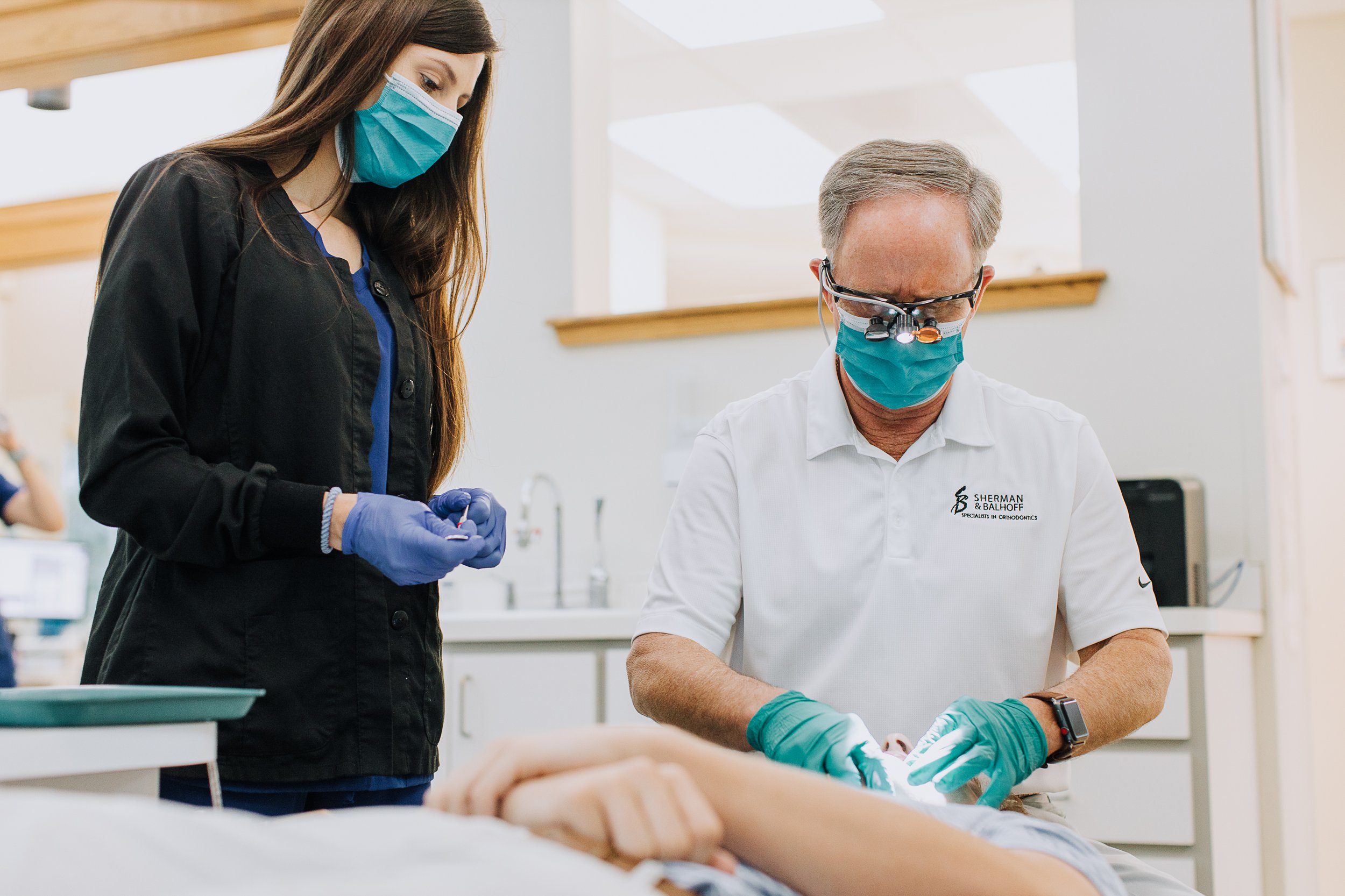Can orthodontic treatment help sleep apnea?
In short, yes. Orthodontics can help manage obstructive sleep apnea in adults and children in some cases.
Obstructive sleep apnea causes and symptoms

Obstructive sleep apnea is the most common form of sleep apnea, and it occurs when the airway becomes blocked due to relaxation of throat muscles or other airway obstructions.
Adults with obstructive sleep apnea often snore, gasp, or choke and have witnessed pauses in breathing during sleep. They may also experience frequent night awakenings, non-restorative sleep, morning headaches, excessive daytime sleepiness, difficulty with attention and concentration, mood disturbance, and difficulty controlling other medical conditions such as diabetes, hypertension and obesity.
Children with obstructive sleep apnea may snore, have witnessed pauses in breathing, and choke or gasp during sleep. Parents may find the child sleeps in unusual positions, such as having the head hanging off the side of the bed, as well as appearing very restless with frequent position changes during sleep. Other symptoms in children include sleepiness which can impact daily activities and school work in older children. Those who previously had discontinued daytime napping may resume daily or near-daily naps. In some children, hyperactivity rather than excessive sleepiness may present. While obesity may be a contributor in some children, others may present with failure to thrive.
Obstructive sleep apnea treatment
Positive airway pressure (PAP) therapy is generally accepted as the gold standard treatment method for obstructive sleep apnea in adults. PAP therapy is delivered through a mask.
In some cases, traditional orthodontic treatment such as braces could help reduce misalignment that may be contributing to obstructive sleep apnea. In other cases, an orthodontist may use special devices for patients to wear during night that keep the jaw in a favorable position.
For other patients, surgery including nasal and/or palatal surgery with or without mandibular (lower jaw) surgery, genioglossus (chin tongue) advancement and hyoid suspension (modification to the bone and muscles supporting floor of the mouth) may be considered. Other soft tissue surgeries might be suggested that involve the tonsils, adenoids, frena (tissue attached to bone) and tongue. Certain nerve stimulation addresses the impaired muscular tone in obstructive sleep apnea and may also be considered in certain patients.
The takeaway
Obstructive sleep apnea is a medical disorder that can have many serious consequences if left untreated. It can affect adults and children and can present at any point in the lifespan. Visit us for a free consultation or your physician for more information.
If you are interested in reading more, click here for the full American Association of Orthodontists whitepaper on orthodontics and obstructive sleep apnea.
Chances are you’ve been learning about the benefits of good oral hygiene since you were first introduced to a toothbrush as a child. We all know brushing our teeth should be a part of our daily routine, but the benefits of good oral hygiene go far beyond fresh breath. Good oral hygiene is the number one way to prevent gum disease, a condition afflicting nearly half of American adults according to a study by the American Academy of Periodontology.
This statistic alone is alarming, but it gets worse as more and more studies are linking the inflammation of gum disease with other conditions such as diabetes, stroke, heart disease and cancer – all epidemics in our country.
We’d like to combat periodontal disease, as well as improve your overall health by explaining the benefits of good oral hygiene. It’s up to you to make the change, and we are here to help!
The Benefits of Good Oral Hygiene
-
Reduce the chance of tooth decay
-
Reduce tooth sensitivity
-
Reduce the likelihood of cavities, and the resulting fillings
-
Preventative care is always less expensive than emergency care
-
Keeping your teeth (rather than needing dentures or crowns) is more likely
-
Fresher breath
-
Reduced chance of root canals and oral surgery
-
Better gum health
-
Lowered risk of cancer
-
Lowered risk of stroke
-
Lowered risk of heart disease and heart attack
-
Healthier pregnancy and stronger fertility
-
Lower risk of Type 2 Diabetes
-
Lower risk of developing Alzheimer’s disease
Overall, good oral care results in a healthier mouth and a healthier body!
Recommendations for Good Oral Hygiene
The basis of good oral hygiene starts with good home care. The American Dental Association recommends:
-
Brushing teeth twice a day with fluoride toothpaste
-
Flossing at least once a day
-
Drinking water between meals
-
And of course, seeing your dentist on a regular basis
Remember orthodontic treatment is suitable for patients of all ages. Treatment can be accomplished with minimal discomfort and in a reasonable time period that can have lasting results. Now that you know the truth about braces, feel comfortable to go and enjoy life.
Ceramic braces and metal braces use a similar design to achieve straight teeth and a healthy smile, but the major difference is the material the brackets are made from. Ceramic braces are often preferred over metal braces by older teens and working professional adults who want to straighten their teeth without the appearance of metal braces




